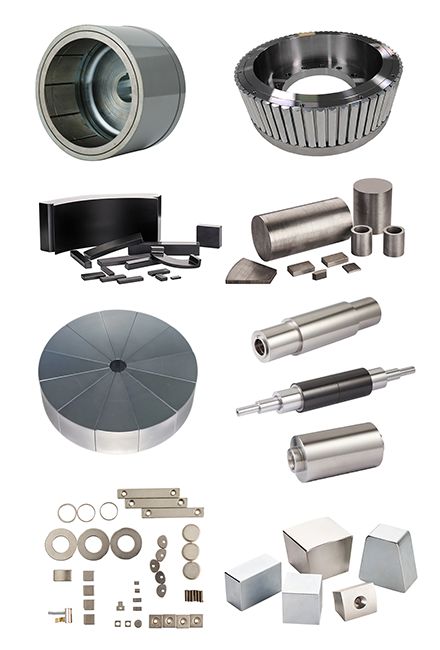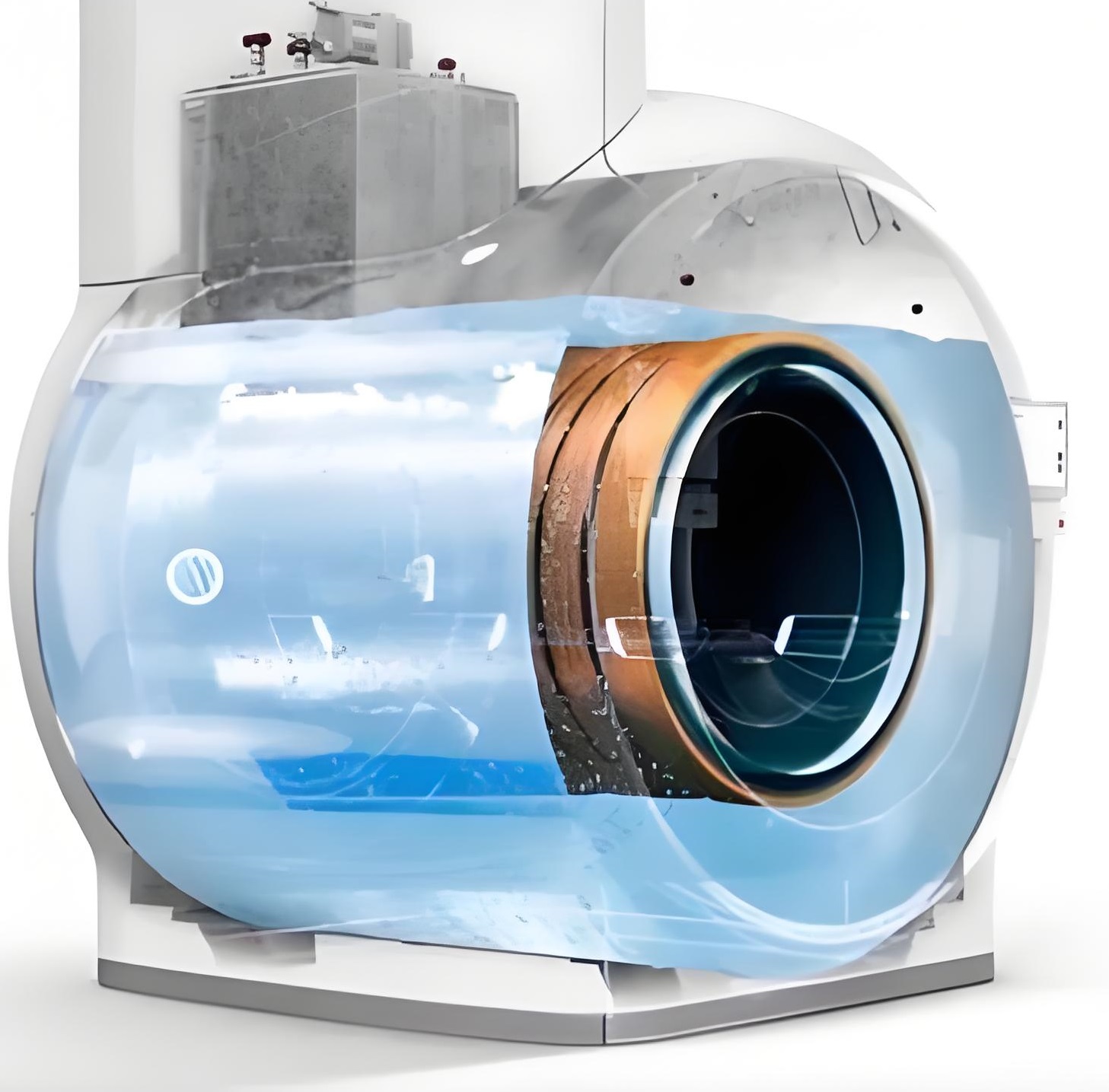
CJL – Specializing in Magnetic Resonance Components
I. In – Depth Technological Exploration from Equipment to Components
Magnetic resonance technology, a crucial force in the modern detection field, is widely applied in numerous areas such as medical diagnosis, industrial non – destructive testing, and scientific research exploration. Hangzhou Magnet Power Technology Co., Ltd. (CJL) specializes in the research, development, and production of magnetic resonance components. It is committed to providing high – performance and highly reliable core components for various industries, and has become an important driving force for the development of magnetic resonance technology.
The permanent magnet system independently developed by CJL uses high – performance rare – earth permanent magnet materials, combined with advanced magnetic circuit design and processing technology, achieving a perfect combination of high magnetic field strength and high uniformity. From the low – field – strength components of 0.1T, which are suitable for industrial testing and basic scientific research scenarios with relatively low magnetic field requirements and an emphasis on portability and cost – effectiveness, to the high – field – strength components of 1T, which meet the strict requirements for high – resolution images in medical diagnosis, CJL’s permanent magnet system covers the entire range of field strengths, meeting the precise detection needs of different scenarios.
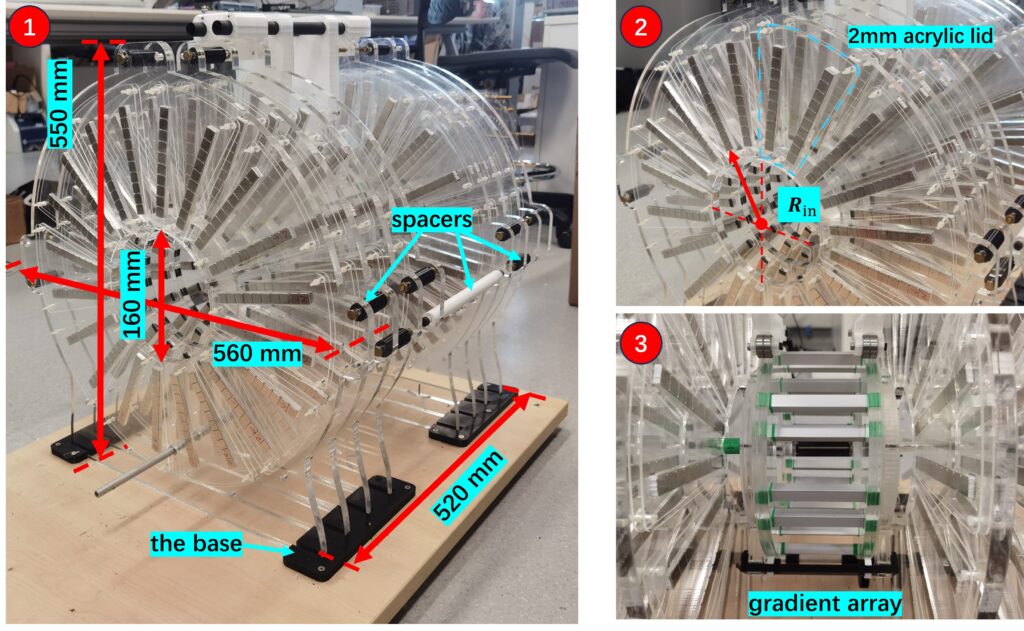
II. Technological Breakthroughs and Quality Assurance
1. Dynamic Shimming Technology
Magnetic field uniformity is an important guarantee for the quality of magnetic resonance imaging, directly affecting the resolution and clarity of images. CJL adopts a three – level shimming system that integrates passive shimming, active shimming, and dynamic shimming technologies, achieving precise control of the magnetic field uniformity and ensuring that the magnetic field uniformity reaches ±100 ppm. Passive shimming preliminarily homogenizes the magnetic field by placing shim plates of specific shapes and positions around the magnet. Active shimming uses the magnetic field generated by an electric current to compensate for the remaining magnetic field non – uniformity. The dynamic shimming technology monitors the changes of the magnetic field in real – time and automatically adjusts the shimming parameters according to the monitoring results to adapt to different working environments and detection objects.
2. Temperature Compensation
Changes in ambient temperature can affect the magnetic field stability of magnetic resonance components, thereby affecting imaging quality and detection accuracy. CJL’s temperature compensation system uses high – precision temperature sensors to monitor changes in ambient temperature in real – time and automatically compensates for the magnetic field according to the temperature changes. When the ambient temperature is between 20°C and 100°C, the magnetic field stability is within ±100 ppm. In the medical field, whether in cold winters or hot summers, the temperature compensation system can ensure the normal operation of magnetic resonance equipment and provide reliable diagnostic services for patients. In industrial testing, for industrial products that need to be tested under different ambient temperatures, such as the testing of aerospace components in simulated high – and low – temperature environments, the temperature compensation system can ensure the accuracy and reliability of the test results and provide strong support for the quality control of industrial products.
3. Assembly Positioning
In the manufacturing process of magnetic resonance components, the assembly accuracy of the magnet has a crucial impact on the magnetic field performance. CJL adopts advanced laser positioning technology to achieve high – precision control of the magnet assembly process, controlling the magnet assembly error within 0.1 mm. Laser positioning technology uses the high directivity and high – energy density of the laser to accurately determine the position and attitude of the magnet, ensuring that the magnet is installed as required during the assembly process. In the assembly of permanent magnets, laser positioning technology can ensure that the gaps between permanent magnets are uniform, thereby improving the uniformity and stability of the magnetic field. High – precision magnet assembly not only improves the performance of magnetic resonance components but also reduces magnetic field distortion and energy loss caused by assembly errors, improving the reliability and service life of the product. In medical equipment manufacturing, high – precision magnet assembly can ensure the image quality of magnetic resonance imaging equipment and provide more accurate diagnostic basis for doctors. In scientific research equipment manufacturing, it can meet the needs of researchers for high – precision experimental conditions and promote the smooth progress of scientific research work.
4. Vacuum Patent Sintering Process
Magnets generate heat during operation. If the heat cannot be dissipated in a timely and effective manner, it will lead to a decline in magnet performance and even damage. CJL’s vacuum sintering process effectively improves the heat dissipation efficiency of magnets through the sintering device, increasing it by 30% compared with traditional processes. The vacuum sintering process sinters the magnet in a vacuum environment, which can remove impurities and gases inside the magnet and improve the density and compactness of the magnet. The patented sintering device uses a special structural design and heat – dissipation technology to quickly transfer the heat generated by the magnet during the sintering process, achieving efficient heat dissipation. In high – field – strength magnetic resonance components, the magnets generate more heat, and efficient heat dissipation is crucial for ensuring the performance and stability of the magnets. Improving the heat dissipation efficiency can extend the service life of the magnet and improve the reliability and stability of the magnetic resonance components. In medical equipment, it can ensure the long – term stable operation of the equipment and provide continuous diagnostic services for patients. In industrial testing equipment, it can adapt to long – term and high – intensity testing work, improving the efficiency and quality of industrial production.
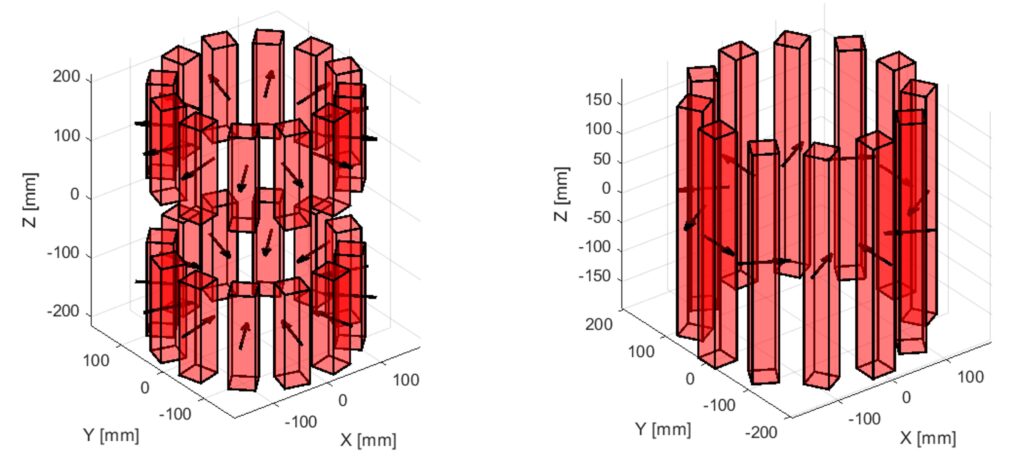
III. Application Solutions
In terms of mobile magnetic resonance equipment, low-magnetic field MRI shows great application potential. Traditional high-magnetic field MRI equipment is large in size and complex in structure. It needs to be fixed in a specially shielded venue for operation, and its use scenarios are limited. Low-magnetic field MRI can be integrated into mobile equipment, bringing more possibilities for the expansion of medical services. In remote areas or areas with scarce medical resources, mobile low-magnetic field MRI equipment can regularly conduct inspection services, allowing local residents to enjoy advanced medical imaging diagnosis without long journeys. In disaster rescue scenarios, such equipment can also arrive at the scene quickly to conduct preliminary imaging diagnosis of the injured, providing key basis for subsequent treatment, greatly improving rescue efficiency and quality.
In the field of pet MRI, low-magnetic field MRI is becoming a powerful assistant for pet medical care. As a close partner in people’s lives, the health of pets is increasingly valued. However, when pets undergo MRI examinations, they often feel fear and anxiety due to the huge noise and claustrophobic space generated by high-magnetic field equipment, which affects the examination effect. The magnetic field intensity generated by low-magnetic field MRI equipment is relatively low, the noise is lower, and the equipment design can be more flexible. For example, the open structure can effectively relieve the tension of pets. This allows the examination process to obtain high-quality images without deep anesthesia or long-term restraint of pets. Taking the examination of pets’ spinal diseases as an example, low-magnetic field MRI can clearly present the structure of the spine, help veterinarians accurately judge problems such as herniated discs and spinal canal stenosis, provide a basis for formulating scientific treatment plans, reduce pets’ pain, and improve the success rate of treatment.
For experimental MRI, low-magnetic field MRI brings many conveniences to scientific research. In biomedical research, long-term and dynamic monitoring of experimental animals is required to explore the mechanism of disease occurrence and development and evaluate the efficacy of drugs. Low-magnetic field MRI equipment has the characteristics of miniaturization and low cost. It can be placed directly in the laboratory, which is convenient for researchers to operate at any time. In the process of studying the neural development of mice, researchers use low-magnetic field MRI equipment to regularly scan their brains without interfering with the normal living state of mice to observe the growth and connection changes of neurons. This type of imaging data obtained under natural physiological conditions is more real and reliable, which helps to gain a deeper understanding of the pathogenesis of neurological diseases, provide strong support for the development of new treatment methods, and promote the rapid development of biomedical research.
1. Material Analysis
CJL’s magnetic resonance components have powerful functions in material analysis and are widely used in the analysis of material composition and structure in high – end manufacturing industries such as electronic components and aerospace parts. Through magnetic resonance spectroscopy technology, it can accurately analyze the chemical composition and molecular structure of materials, providing important data support for material research and development, quality control, and performance optimization. In the production of electronic components, the detection of the purity and impurity content of semiconductor materials is of great significance. CJL’s magnetic resonance components can accurately detect the trace elements and impurity distribution in materials, ensuring the performance and reliability of electronic components. In the aerospace field, for the research and development and application of new composite materials, it is necessary to deeply understand the structural changes and performance characteristics of materials under extreme environments. Magnetic resonance components can analyze materials in simulated high – temperature, high – pressure, and strong – radiation environments, providing a scientific basis for the design and manufacturing of aerospace parts and promoting the development of aerospace technology.
2. Customized Design
In order to meet the diverse testing needs of different industrial fields, CJL provides customized design services and supports the development of detection cavities with different sizes ranging from φ20 – φ300 mm. Whether it is small precision parts or large – scale industrial equipment, a suitable magnetic resonance detection solution can be found. In the manufacturing of electronic devices, for small components such as chips and circuit boards, high – precision small – sized detection cavities are required for accurate detection. In fields such as machinery manufacturing and energy, for large – scale engine parts and pipelines, large – sized detection cavities need to be developed to adapt to their sizes and shapes. CJL’s customized design team can quickly design and manufacture detection cavities that meet the requirements according to the specific needs of customers, ensuring that the magnetic resonance components can be perfectly integrated with the customer’s production process and testing technology, and improving the pertinence and effectiveness of industrial testing.
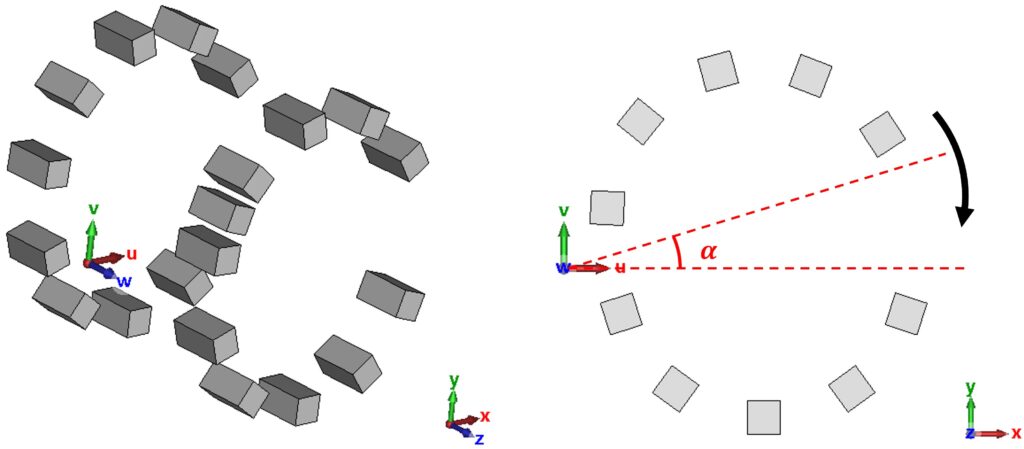
IV. CJL – Cost Reduction, Efficiency Improvement, and Service Assurance
1. Cost Reduction
CJL’s component – based procurement model brings significant cost advantages to customers. In the traditional whole – machine assembly procurement method, customers often need to pay a high equipment procurement cost at one time, which is a relatively large burden for many enterprises and institutions with limited budgets. However, with CJL’s component – based procurement, customers can choose to purchase the required magnetic resonance components according to their actual needs, avoiding unnecessary equipment function redundancy and capital waste.
2. Provide Full – Process Technical Support
CJL has a professional technical team that can provide full – process technical support from magnet design to system integration for customers. In the magnet design stage, the team will conduct personalized magnet design according to the specific application scenarios and requirements of customers to ensure that the magnet performance meets the customer’s requirements. For some scientific research projects with high requirements for magnetic resonance technology, CJL’s technical team will deeply understand the project requirements, participate in the preliminary planning and design of the project, provide professional technical advice and solutions, and help customers build a magnetic resonance system that meets the scientific research needs, ensuring the smooth progress of the project.
3. Quality Inspection
Hangzhou Magnet Power Technology Co., Ltd. provides customers with a full – chain service for magnetic resonance components, custom – making magnetic solutions suitable for multiple scenarios such as medical diagnosis, industrial testing, and scientific research exploration. In the manufacturing process, laser positioning technology is used to achieve a magnet assembly error of less than 0.1 mm, and a carbon fiber skeleton is used to optimize the structure to ensure high – quality product delivery. In terms of magnetic field uniformity, the magnetic field uniformity is controlled within ±100 ppm. In the performance test link, core indicators such as magnetic field stability are strictly tested to meet the needs of multiple fields with technologically advanced products.
4. After – Sales Service
In order to respond to customers’ needs in a timely manner, no matter where the customers are, as long as there is a problem with the product, CJL’s service team will respond immediately. Technical personnel are provided to assist in diagnosis, which can quickly understand the source of the problem and provide emergency solutions.
5. R & D Exploration
CJL continues to delve deeply on the path of technological innovation. Through continuous R & D investment and technological exploration, it has achieved fruitful patent results, with a cumulative total of 23 patents. These patents cover multiple key fields such as magnetic material sintering devices, magnetic field structure optimization, and multi – pole array magnet design, providing a solid guarantee for the company’s leading technical position.
Through continuous technological innovation, CJL ensures that its products always maintain an industry – leading level in terms of magnetic field strength, uniformity, and stability, providing customers with higher – quality and more reliable magnetic resonance components.



